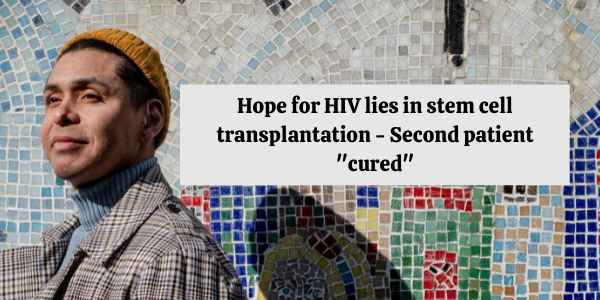
Hope for HIV lies in stem cell transplantation – Second patient “cured”

In a breakthrough, a study published in The Lancet HIV journal reveals that a London man has become the second person in the world to be cured of HIV.
“The man is still free of the virus even 30 months after stopping the antiretroviral therapy,” reports the journal. According to the report, the man, identified as Adam Castillejo was not cured by the HIV drugs, but by a stem-cell treatment, he received as his cancer cure.
His donor carried a mutation known as CCR5-delta 32, which made him resistant to HIV.
Treatment & Results
The 40-year-old patient who revealed his identity this week was diagnosed with HIV in 2003 and had been on medication to keep the disease in check since 2012. Later that year, he was also diagnosed with advanced Hodgkin’s Lymphoma, deadly cancer.
As a treatment for his cancer, he underwent a bone marrow transplant receiving stem cells from donors with a genetic mutation present in less than one per cent of Europeans that prevents HIV from taking hold. Castillejo’s viral tests of cerebral fluid, intestinal tissue and lymphoid tissue, two years after stopping antiretroviral treatment showed no active infection.
According to the lead researcher Prof Ravindra Kumar Gupta, from the University of Cambridge, this represents HIV cure with almost certainty. “We have now had two and a half years with anti-retroviral-free remission.
Our findings show that the success of stem-cell transplantation as a cure for HIV, first reported nine years ago in the Berlin Patient, can be replicated,” he added.
But, the main thing to note is that this is not a treatment that would be offered widely to all patients with HIV since this aggressive therapy was primarily used to treat the patients’ cancers, not their HIV.
“It is important to note that this curative treatment is high-risk and only used as a last resort for patients with HIV who also have life-threatening haematological malignancies,” adds Dr Gupta. Still, it might offer hope of finding a cure in the future, using gene therapy.
Timothy Brown, the “Berlin Patient” became the first person reported as cured of HIV, three and half years after having similar treatment in 2011.
The Methods Used
The Lancet study described the methods they used like this:
We used ultrasensitive viral load assays of plasma, semen, and cerebrospinal fluid (CSF) samples to detect HIV-1 RNA. In gut biopsy samples and lymph-node tissue, cell-copy number and total HIV-1 DNA levels were quantified in multiple replicates, using droplet digital PCR (ddPCR) and quantitative real-time PCR. We also analysed the presence of intact proviral DNA using multiplex ddPCR targeting the packaging signal (ψ) and envelope (env). We did intracellular cytokine staining to measure HIV-1-specific T-cell responses. We used low-sensitive and low-avidity antibody assays to measure the humoral response to HIV-1. We predicted the probability of rebound using a mathematical model and inference approach.
Though the tests suggest 99% of Mr Castillejo’s immune cells have been replaced by donor ones, he, as well as Mr Brown still has remnants of the virus in his body. Hence, it is impossible to say his HIV will never come back for sure.
In an interview given to the ‘New York Times,’ Castillejo said that he wanted to be an ambassador of hope. “This is a unique position to be in, a unique and very humbling position,” he added.
Castillejo’s cure “means the first one [in the Berlin patient] wasn’t an anomaly or a fluke,” added Dr Gupta.
Source: The Lancet, BBC, New York Times, The Guardian, Mirror.co.uk
https://www.thelancet.com/journals/lanhiv/article/PIIS2352-3018(20)30069-2/fulltext